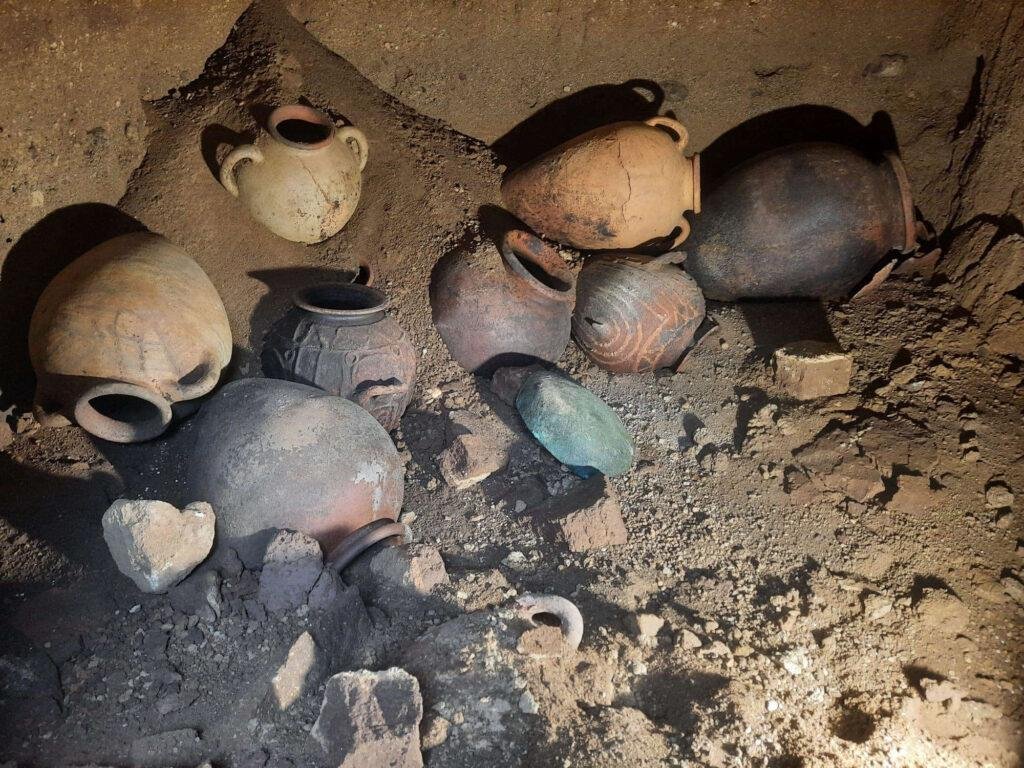A 2,600-year-old Etruscan tomb, untouched since its creation, has been opened by archaeologists in the Vulci Archaeological Park in central Italy.
 Tomb 58: a selection of artifacts discovered within the tomb. Credit: Municipality of Montalto di Castro
Tomb 58: a selection of artifacts discovered within the tomb. Credit: Municipality of Montalto di Castro
This remarkable discovery, located within the Osteria necropolis of Vulci, sheds light on the rich cultural heritage of the Etruscan civilization, particularly in the ancient city of Vulci, which flourished from the 6th to 4th centuries BCE.
The tomb, designated “Tomb 58,” was meticulously carved into the volcanic tufa rock and consists of two intact chambers. Excavations, led by the Soprintendenza Archeologia, Belle Arti e Paesaggio for the province of Viterbo and southern Etruria, have been ongoing for 12 years at the Osteria necropolis.
Among the pristine artifacts found inside the tomb are pottery, amphorae, ornamental accessories, iron objects, and a bronze cauldron, along with a tablecloth used in the Etruscan ritual of the “last meal.” The tomb’s contents, remarkably well-preserved, provide valuable information about the lifestyle of an elite Etruscan family, suggesting their high social status during the heyday of Vulci.
A notable feature of the tomb is its architectural layout, characterized by a septum spared in the rock that creates an archway between the dromos (short corridor with steps), the vestibule, and the two chambers. This layout, as explained by Carlo Casi, director of the Vulci Foundation, is distinctive, with the absence of the usual right chamber, likely due to prior tomb occupancy.
The archaeological team discovered a significant collection of amphorae, some of which are believed to originate from Greece, notably the island of Chios. These amphorae highlight the importance of the wine trade in the region during ancient times. Simona Carosi, archaeologist in charge of the Archaeological and Nature Park, emphasized the find’s uniqueness in portraying the Etruscan funerary banquet as practiced centuries ago.
The unveiling of Tomb 58 took place on October 27, attended by local authorities and archaeological experts, including Montalto di Castro Mayor Emanuela Socciarelli, Lazio Region Culture Councillor Simona Baldᴀssarre, and Simona Carosi, the manager of the Superintendency of Archaeology. The discovery adds to the series of remarkable finds in the Osteria necropolis, such as the ‘Tomb of the Sun and the Moon,’ the ‘Panathenaic,’ ‘Carved Ceilings,’ and the grand burial known as the ‘Tomb of the Sphinx,’ all dating back to the 6th century BCE.





